Here’s What a Day in the Life of a CEO Looks Like
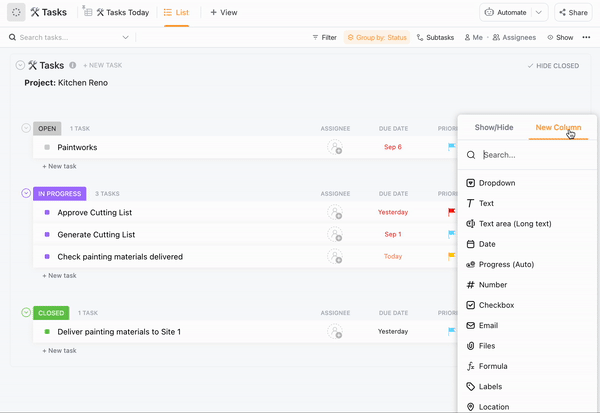
Sorry, there were no results found for “”
Sorry, there were no results found for “”
Sorry, there were no results found for “”

What does a day in the life of a CEO look like? The answer to that question depends on different factors like the size of the organization and the industry.
Despite those differences, all CEOs share some things in common. As the chief executive officer, they’re the highest-ranking position within an organization. They also share a few common responsibilities: driving growth and expansion, managing overall operations, and in the case of for-profit companies, improving profitability.
On the day-to-day level, this means the job is largely strategic. CEOs spend their time in meetings with stakeholders, management, and other members of the C-suite to oversee operations. They also create the vision and strategies that the organization will follow in order to keep growing.
Travel is often a part of the job, too. CEOs should expect to attend conferences, meet with new customers, and more.
That’s a simplified version of what happens in a typical day for a CEO. Let’s dive in for a deeper exploration of this role and how they work with the greater leadership team.
So what are some of the things that the average CEO can expect throughout the typical day? Let’s break down some of the most common duties and challenges that you’ll encounter, along with an overview of how successful CEOs manage their time and the entire company. ✨
While there may be some differences from one organization or industry to the next, there are a few duties and expectations that most CEOs need to uphold. Let’s take a look.
While lower-level managers often handle the nuts and bolts of operational activities, the most successful CEOs use their top-down view of the organization as a whole to keep everyone aligned on the strategic direction. ➡️
The CEO’s job often includes an element of entrepreneurship. They need to be able to work with other members of the C-suite to create a vision for the organization and look for new business opportunities.
While individual departments and projects will have their own budget and management team, the CEO is responsible for the organization’s overall financial performance. That means monitoring and tracking the company’s financial health to keep things running smoothly.
The most successful CEOs are often considered the face of the company and the company’s strategy. As such, this means that they may need to speak with members of the media, participate in interviews, address the public, speak at conferences, and attend other public relations events.
The CEO’s job encompasses not only management but also leadership. Their leadership style directly influences company culture and the work environment for employees. Setting a positive example as a leader will help you improve organizational culture, team dynamics, and overall productivity.
Both the CEO and the board of directors oversee organizational performance. However, it’s the CEO’s responsibility to report to the board and receive feedback about the organization’s direction.
The typical day in the life of a CEO comes with not only responsibilities, but also challenges. Successful CEOs quickly learn—and deploy—strategies to overcome some of these challenges.
So what can you expect? Here are some of the top challenges. 👀
The CEO role can be hectic. It’s crucial to set distinct boundaries between your work life and your personal life so that work doesn’t eat away at the time you’ve allocated for your family, friends, and wellbeing.
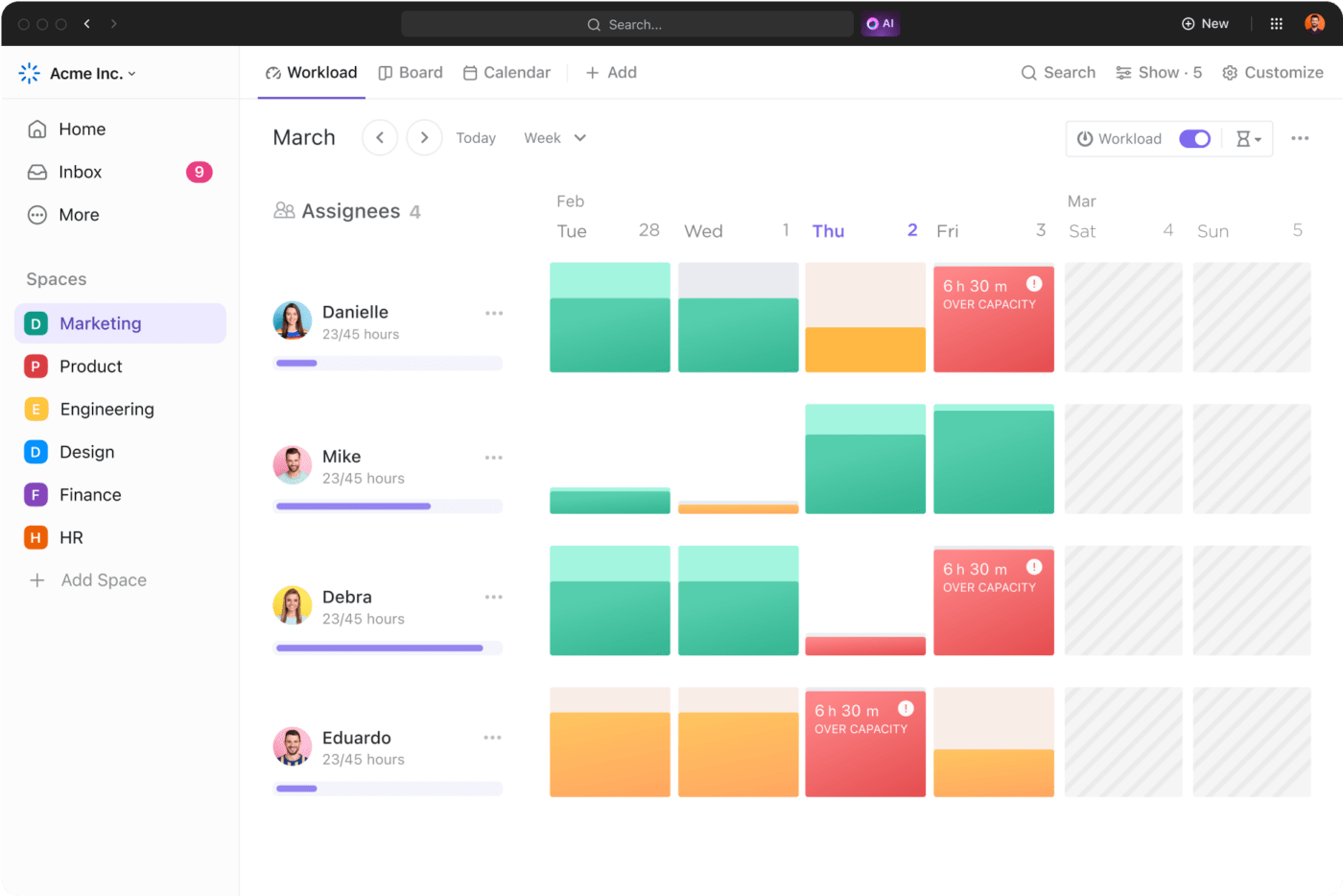
Neither startups nor Fortune 500 companies have unlimited resources. No matter how big your vision for the organization is, you’ll need to figure out how you can pull it off with the assets and manpower available.
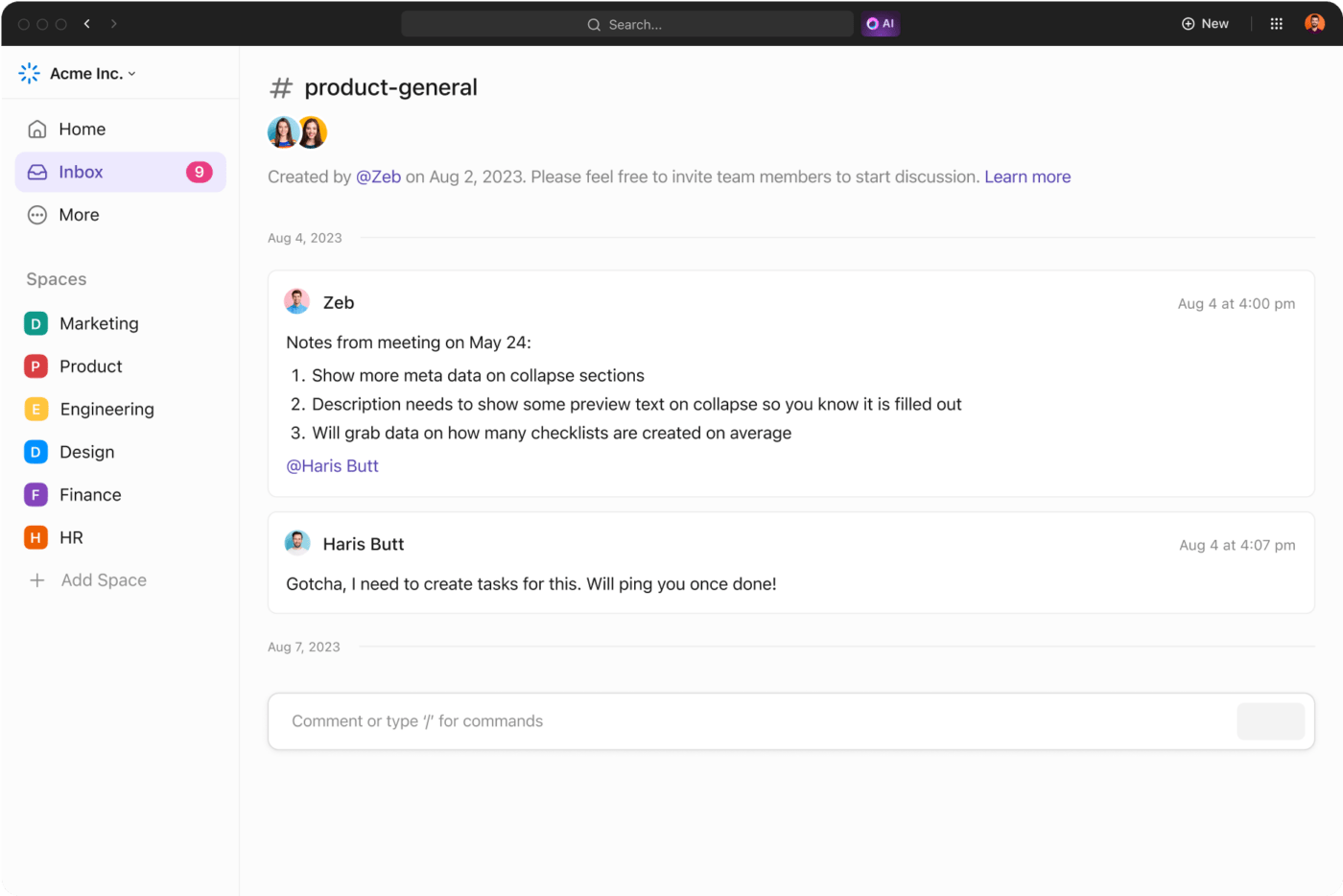
In some organizations, lines of communication are murky. It’s up to the CEO to establish a culture of transparency and open communication between teams and management.
Change is a natural part of business—but factors like job safety or uncertainty about new duties or work conditions can lead to employees who are hesitant to accept change. As CEO, you’ll need to identify the root cause of the resistance, then address it head-on to soothe fears and uncertainties.
When team members or departments aren’t performing up to standards, it’s easy to assume that the problem is a poor work ethic. However, CEOs need to be able to tackle this issue with an open mind. When team members aren’t fully committed to their projects, underlying reasons could have to do with workloads that are too large or cultural problems—and CEOs need to be able to identify these issues and correct them.
Naturally, CEOs care deeply about their organizations—and that can lead to anxiety about how performance is going or how projects are progressing. For some leaders, it becomes tempting to micromanage in an effort to keep everything on track. While there may be good intentions behind it, micromanagement leads to demotivated workers, high levels of stress for everyone involved, and lower productivity.

One thing they may not teach you in business school is how to effectively manage a jam-packed schedule. And as CEO, there is no winging it. To keep up with everything, you’ll need to rely on a few proven time management strategies:
So what does a CEO’s day actually look like? We’ll show you some morning routines from successful CEOs, plus insights into how most structure their daily routine at work and at home. 👀
How do successful business leaders manage to do it all? For most CEOs, it starts with a morning routine that focuses on health and wellness to provide a solid foundation for the day. Let’s look at a few examples.
One common theme you’ll notice among successful leaders? Most try to fit in a morning workout. Anna Wintour is no different. Her day starts at 5:45 a.m. After rising, she plays an hour of tennis. Then her stylist puts the finishing touches on her hair, and she’s off to work.
For Alexi Nazem, the day starts at 7 a.m. You’ll find him reading the news online; then he’ll check emails quickly. Next comes a shower, breakfast, and a 20-minute walk to the office, which gives him a dose of physical activity along with time to think and plan the day ahead.
Bill Gates is another CEO who fits fitness into his morning routine. He does an hour-long cardio workout each day. After that, he skims through the latest news from major newspapers to catch up on current events—and he pays special attention to topics focusing on health.
While everyone’s a little bit different in regard to how they work best, most CEOs follow a similar routine on a daily basis. It’s nothing complicated—just follow the simple outline below for the commute, the morning at work, and the afternoon. 🙌
For the average leader—not just the CEO but also the COO, CFO, and other members of the leadership team—the day starts with the commute. Successful leaders see this time as a chance to multitask.
Now that doesn’t mean you should be driving with one hand and typing with the other! Safety first, after all.
But it does mean that many leaders use this time to catch up on podcasts or listen to relevant audiobooks. In an otherwise packed schedule, this can be an important time to work on personal development. CEOs also often take this time to listen to the news or to make hands-free phone calls so that they can get a head start on their daily communications.
For CEOs who can take public transit, the options expand. Many use this time to read and respond to emails or do research for upcoming projects and presentations.
For most people, productivity is at its highest in the mornings. It’s when you’re most awake, alert, and energized—before the afternoon slump hits and before willpower starts to decline for the day. Mornings also tend to have fewer distractions since emails and issues that need attention tend to crop up as the day goes on.

This is why many successful leaders save their mornings for brainstorming, planning, decision-making, and project work rather than meetings and managing emails. Get the most important work—not necessarily the hardest work—out of the way first, while you still have the energy and focus to do these things efficiently. 🧠
Meetings and communications are a huge part of a CEO’s daily routine—and for many, the afternoon is the best time to tackle these things. Theoretically, you spent the morning completing the day’s most critical tasks, so now you can block out time for all the rest.

So that emails, texts, and voicemails don’t go ignored all day long, one trick is to divide your afternoon into three blocks: time for communications right after lunch, time allocated for meetings, and then at the end of the day, another block of time for communications and planning the next day’s activities.
The ideal work-life balance is different for everyone. Some feel at their best when they’re focused on work all day (and night), every day. However, most need at least some time away from work so that they can avoid burnout and focus on their personal lives and wellbeing.
So how do you strike the right balance? Whether you choose to stop working at 5 p.m., 8 p.m., or 10 p.m., it’s all about setting strict boundaries. When you’re not engaged in work, it’s time to switch off the work-related part of your brain and instead focus on family time, friends, or your own personal interests. Aim to spend at least a little time each day on yourself so that you can unwind and de-stress.
For CEOs with particularly busy schedules, or who are facing a potentially late night at work, one way to fit in some personal time is through small breaks during the day. Instead of scheduling a lunch meeting, for example, use that time to enjoy your meal privately, chat with your significant other, or jot down some thoughts in your journal. 🌻
Not all CEO roles are the same! Entrepreneurs who become CEOs of their startups will have a different workload from the corporate CEO who has a full leadership team plus executive assistants to help get things done. It’s all about context—which is why we’re highlighting the differences between startup, corporate, and nonprofit CEOs.
Imagine a scrappy startup company vying to be competitive in a marketplace filled with corporate giants, and you’ll understand some of what it means to be a startup CEO. These CEOs are most often former entrepreneurs who took risks and weathered uncertainty to launch their company. They’re working with minimal assets—and that means they need to be much more hands-on when it comes to the day-to-day operations of their company.
People in this role need to be flexible, be adaptable, and know how to innovate while minimizing risks. As things can change fast in the startup world, these CEOs also need to be agile, capable of changing direction as needed to grow their fledgling company into something bigger.
At the corporate level, the CEO’s job may be a little less hectic—but it’s still challenging nonetheless. Primary duties shift from hands-on management to the big-picture things, like negotiating with stakeholders and steering the overall direction of the company. It’s also important for the CEO to oversee compliance to ensure that the organization is on the right track, both in terms of regulatory compliance and internal processes.
This can also be a very public-facing role. Think of CEOs from major companies like Apple or some of today’s biggest social media platforms. These leaders spend much of their time giving presentations, speaking to the press, and engaging in other public-facing activities.
CEOs in the realm of nonprofit organizations share some of the same duties as other CEOs. For example, they’re the ones responsible for maintaining and progressing the nonprofit’s vision, direction, and growth. Often, these CEOs do public appearances and speak with the media, too.
Finance is also an important aspect of the job. Nonprofit CEOs need to oversee the financial health of the organization to ensure that its limited funds are utilized wisely.
However, these CEOs do some things that leaders of for-profit businesses don’t. For a CEO in charge of a nonprofit organization, it’s all about the mission—and that can mean a couple of things. First, nonprofit CEOs also need to be able to inspire and motivate their teams to ensure the mission’s success.
Second, community and potential donor outreach to drum up support for your chosen cause is a must. In large part, that is how nonprofits get the funding and volunteers needed to support the mission.
Finally, volunteer management is also a key part of this role, especially among smaller nonprofits where there may not be enough funding to hire staff who can directly oversee volunteers.
While there may not be quick hacks that can help you become a successful CEO overnight, there are quite a few tools and resources that you can leverage to grow your skills, improve your leadership style, and more.
Some of these include:
Business know-how is a must, of course, but as you can see, much of what you’ll need as a CEO revolves around personal development. However, there is one more tool that can help you with day-to-day operations—and we’ll reveal that next. ✨
The one tool that is a must-have for any CEO is a platform designed to help them organize, plan, track tasks, and manage their organization. ClickUp is that platform.
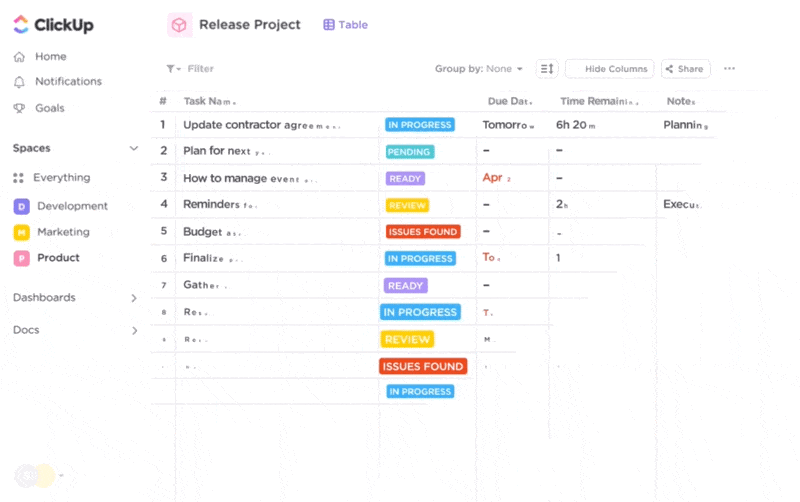
ClickUp is all-in-one business operations software featuring all of the tools you need to grow and manage an organization efficiently. It starts with ClickUp’s project management solutions, which are ideal not just for project managers but also for any CEO that needs direct insight and input into the organization’s day-to-day activities.
With ClickUp, you can use a variety of project and program management templates to manage tasks and track progress on projects, initiatives, and more.
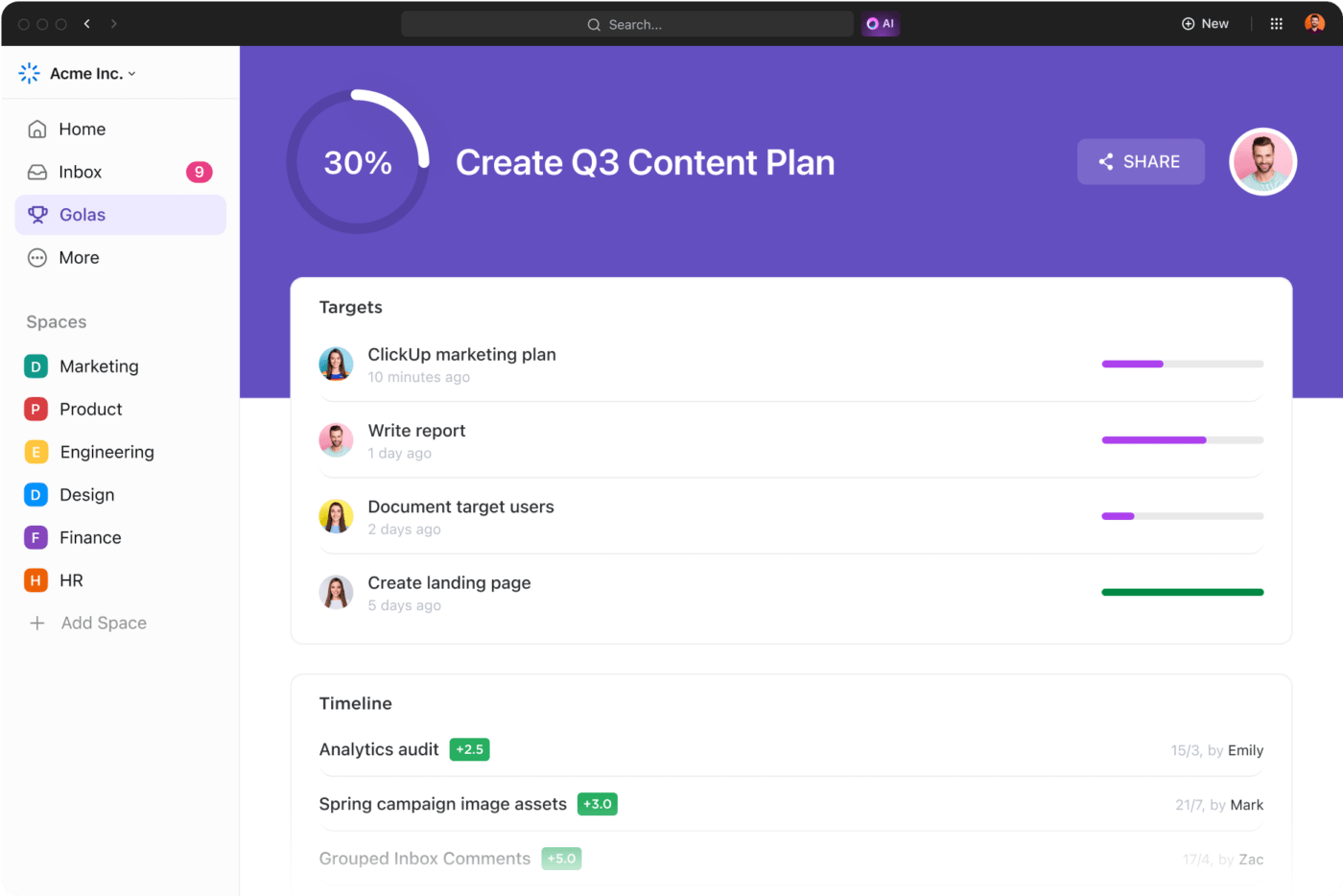
Part of the CEO’s role is to establish and follow through on big-picture tasks, like making improvements to overall productivity or managing stakeholder expectations—and ClickUp can help you outline and track progress on management goals like these. You can use ClickUp for human resources, sales, accounting, marketing, and customer relationship management, too.

Need to track specific metrics and KPIs? ClickUp makes that easy. All you need to do is create an executive dashboard featuring the information you need. Everything is customizable, so you can create a dashboard that not only helps you track important information but also one that supports planning, collaboration, and communication with your teams.
Best of all? This platform is so customizable that it gives you incredible flexibility. Whether you prefer a top-down or bottom-up management approach, you can create dashboards or switch between task management views. This way, you can see both the broad view of the organization as a whole—and check in on the individual projects and tasks that your team is working on.
There’s a reason why we call it “the one app to replace them all.” A day in the life of a CEO is challenging, full of tasks both small and large that need to be done. Plus you need to be able to set aside time for travel, conferences, and a variety of other things—not to mention your personal life and wellbeing on top of everything else.
That’s why ClickUp gives you the tools needed to manage your organization effectively and efficiently—all in one space. Sign up today and discover how ClickUp can help you save time and do more.
© 2025 ClickUp